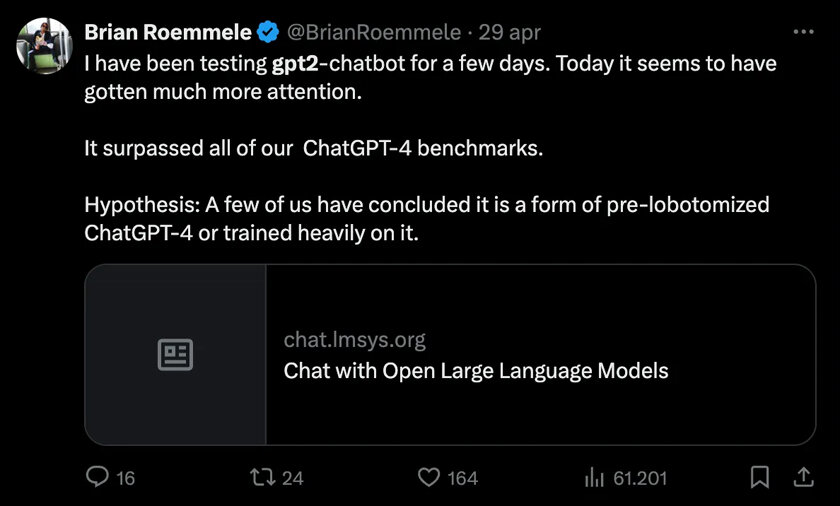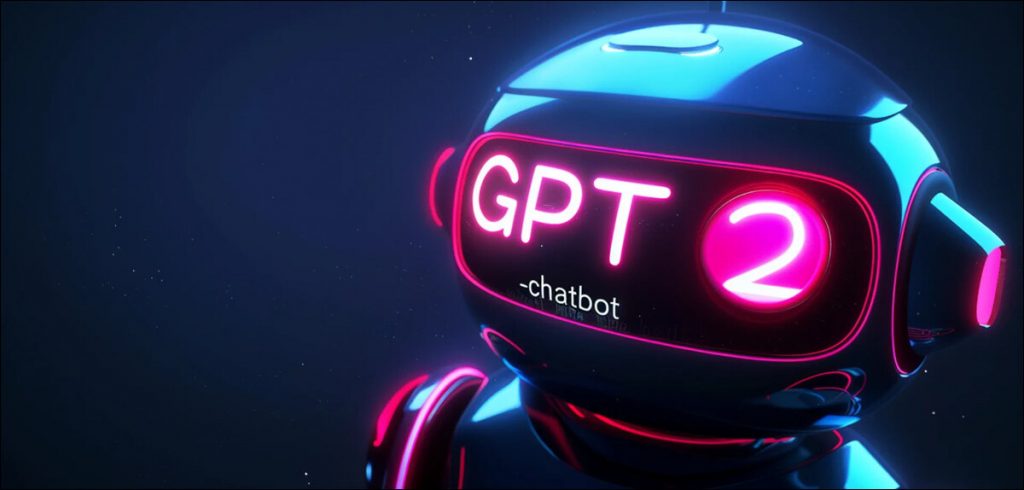GPT-2 Chatbot has injected new energy into the activity of the AI community and offered fresh opportunities for interaction between people and computers.
There were open anticipations for the GPT-4 Turbo regarding performance, better understanding, and a complete array. But hold on! Here comes a party crasher—the elusive GPT-2 Chatbot. This rudimentary model can solve math equations, design games, and even outperform players already identified in the past. Is it the revolutionary underdog, or is it just a promotional gimmick?
As the competition for AI development intensified, GPT-4 Turbo was introduced to the public as the perfect conversational AI. However, no one expected the GPT-2 Chatbot to arise from the shadows and dethrone it. This means that this older model, which appears to have been replaced by a newer version, creates the waves. How is this possible? This has stirred a lot of controversy among AI developers and researchers. Let me take you through the GPT-2 Chatbot trend and explain why everyone discusses it!

What unexpected powers does the GPT-2 Chatbot possess?
The primary building blocks of many cutting-edge AI chatbots are language models, including OpenAI GPT (Generative Pre-trained Transformers). The GPT models, especially the GPT-2 and higher versions, have brought a rather huge leap in the field of NLP. Launched in 2019, GPT-2 offered a new benchmark in AI-based language comprehension that was evidenced by its capability to generate accurate and, most importantly, semantically connected texts. This was followed by GPT-4, which took these abilities a notch higher, providing deeper language reinforcement. Now, while the name might sound very familiar, this is not your run-of-the-mill GPT-2 model.
Recently, in LMSys Chatbot Arena, there was a new chatbot named “GPT-2 Chatbot,” which is claimed to serve as an upgrade of the old GPT-2. However, this chatbot has surprising features that are even comparable to, or superior to, GPT-4, provoking doubts about whether this chatbot is a preview of the next AI OpenAI language models. This was set off by the appearance of a chatbot on the LMSys chatbot testing platform following a tweet by the OpenAI CEO. Users reported its exceptional performance in various areas. It answered multistage arithmetic questions robustly, translated code snippets better than rivals, and was more accurate in the restricted pattern-matching tasks. This ambiguous GPT-2 chatbot has been challenged thoroughly by Brian Roemmele, an AI enthusiast and the founder of the popular AI Newsletter readmultiplex. It is equally important to claim that in his tests, it not only outperforms GPT-4 Turbo in various tasks but also provokes a stir and interest in the AI industry.

Resolving the Enigma: Theories and Speculations
There are several theories that have been put forward to explain why the GPT-2 Chatbot exhibited such behaviour. Another hypothesis is that it might be a further optimised version of the original GPT-2 model, which might include some elements from GPT-4 training processes. Some think it could be a secret trial of the next GPT-4 from OpenAI, some other advanced models, or even an early version of GPT-5.
However, OpenAI’s CEO, Sam Altman, has only added more fuel to the controversy through his concealed messages in a series of tweets. Even Sam Timman and Kuran Ford, both leading figures in AI, have fueled this debate more by identifying the use of GPT-4’s tokeniser and other functionalities of this chatbot, which is labelled GPT-2.
Performance Benchmarks:
- Game Creation: In this case, the users challenged the chatbot to develop games such as Flappy Bird and Tetris. It allegedly produced code that worked, proving that it understood program logic.
- Problem-Solving Prowess: One such occasion can be a complicated Olympiad math problem with an international twist. The chatbot solved it effectively though others suspected the problem could have been a part of the training set.
- Art Generation: When the user asked to draw a unicorn, the chatbot provided a more recognisable image than other models, proving its novelty.
Industry Reactions and Implications
The response from the AI community has been excitement with a hint of pessimism. AI podcaster and analyst Harrison Kinsley said that if this chatbot was indeed using the GPT-2 model, its speed of output generation would be slow unless intentionally slowed down. This has led some to suspect that there might be some effort to hide its true identity.
However, there are several theoretical considerations associated with GPT-2 Chatbot. If an older model can be made better to face current top-ranking AI, then there is a likelihood of a shift in people’s perception towards AI technologies. This may make AI available to more platforms with less power that can support advanced functions, thus increasing equality.

Conclusion: A Close Look at the Future of AI
The fact of appearance and excellent work of the “im-a-good-gpt2-chatbot” as a result of an experiment stimulate essential questions regarding the further advancement of AI. Is this an example of how old models can be revitalised by today’s methods, or is this the opening salvo by OpenAI for their next generation of language models?
Regardless of the answer, one thing is clear the GPT-2 Chatbot has injected new energy into the activity of the AI community and offered fresh opportunities for interaction between people and computers. It has become the new AI benchmark for problem-solving, creativity, and code output. This advancement paves the way for a future where AI can easily fit into our daily lives, providing intelligent aid, encouraging innovation, and transforming multiple fields. As we wait for sequences, it is safe to say that the world of AI chatbots has changed, and the future is something to look forward to.










